Entrepreneur Stories
The Nokia Story

Nokia, a mobile manufacturing company with a Finnish origin, was at the top of its game. Their phones were affordable, made for people of all age groups and were easy to use. With so much going for them, it came as a major shocker to see the Company failing so miserably, Here’s taking a look at the rise and fall of Nokia, a company which started off not as an electronics and telecommunications company, but as a paper mill!
The beginning of Nokia
The beginning of Nokia can be traced back to the year 1865. Back then, this Finnish company was into paper making. The first paper mill was a massive success and by 1960, the Company branched out to electronics. From developing a special radio phone for the Army to creating a new range of electronics, Nokia grew steadily and quickly. Over the next few years, the Company kept adapting to change and by the dawn of the 20th century, Nokia started moving away from the pulp industry and created the first ever car phone! Nokia’s foray into the world of mobile phones started when Jorma Nieminen, fondly known as the Father of the Finnish Mobile Industry, decided to change the course of the company.
Jorma created the need of carrying phones outside their house, a thing which wasn’t considered feasible till the idea was presented. The first phone was manufactured at the meager cost of a 100 pounds and over the years, the Company kept adapting to a point where people slowly got convinced they needed a new version every few years.
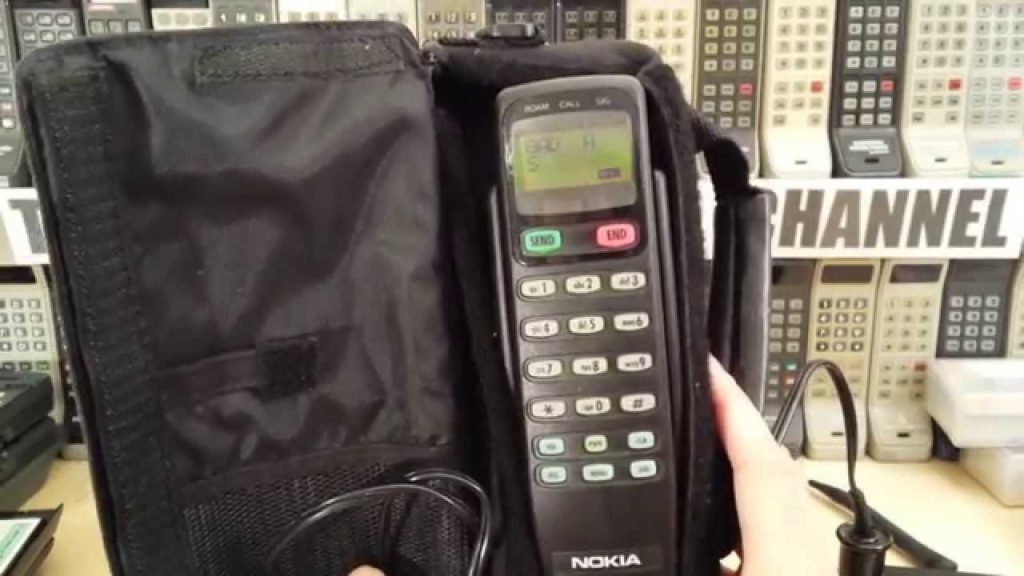
Picture credits: nokiemesuem.info
The growth of Nokia in the world of phones
By the year 1979, Nokia entered a joint partnership with Salora (a leading Scandinavian colour TV manufacturer) to create a radio telephone company called Mobira Oy. Together with Salora, Nokia launched the first ever international cellular system called the Nordic Mobile Telephone network. Creating a link between Sweden, Denmark, Norway, and Finland, this network enabled international conversations and increased communication between people.
Through the years, Nokia acquired not only Salora, but other companies as well, giving the manufacturing company the edge it needed to push toward something bigger and better. The first ever mobile handset by Nokia, called Mobira Cityman 900, was brought to life in the early 1990s. Despite weighing over 800 grams and costing close to $ 5,456, this mobile phone sold like crazy!
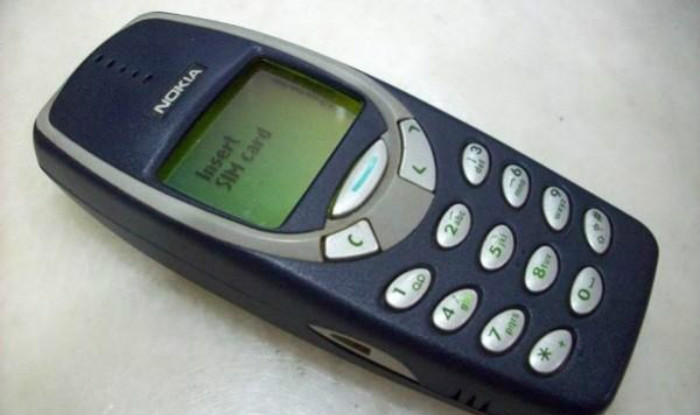
Picture credits: carphonewarehouse.com
The change in Nokia’s strategy
Despite the massive success of the first handheld phone by Nokia, the company saw a lull in its profits. By the 1990s, the Nokia team realised the time had come to change the course of their plan by creating phones which blended with the times. In 1992, the first GSM Nokia phone, called Nokia 1011, was launched and immediately, the Company realised they had made it to the big leagues!
While the 1990s saw the rise of a new series of phones (the most popular one being the Nokia 6100,) the initially years of the next decade saw Nokia branch out into a new world. Making the most of the wireless technology boom at the time, Nokia won people all over the world by promising them an amazing experience. Perhaps the phone which propelled Nokia to the top was the Nokia 7650. Released in the year 2001, this was the first ever phone in the world with a built in camera!
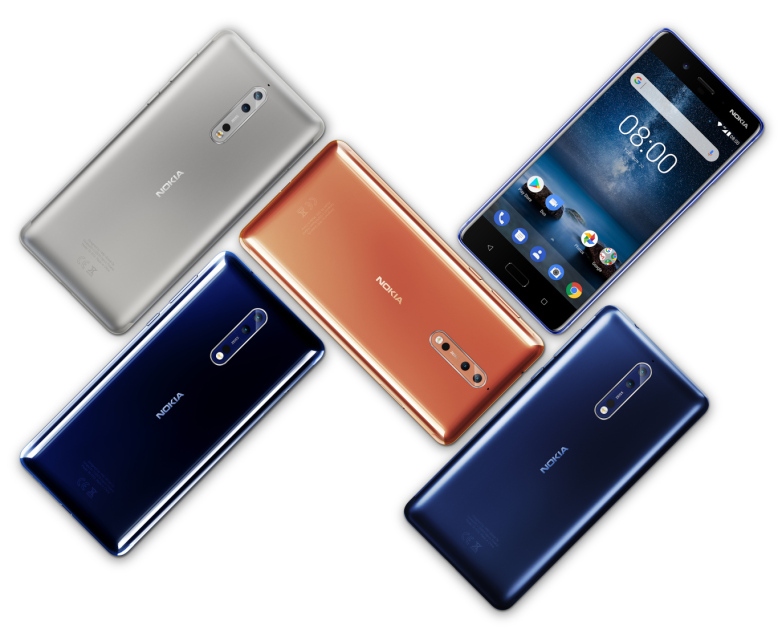
Picture credits: Nokia.com
The gradual decline from fame
Within the first few years, Nokia’s profits started sky rocketing and the company kept expanding its services to a whole new place. At its heart, Nokia was always a hardware company and despite all its efforts to stay ahead of the game, it didn’t realise the growing effect the touchscreen phenomenon was having on the rest of the world! To add to the bag of ever growing troubles, faulty batteries made Nokia recall an entire shipment of phones, a move which resulted in a 30 % dip in sales!
Although the 90’s were Nokia’s rise to fame, the year 2007 saw a steep decline in Nokia’s profits. In 2009, the Company posted its first ever quarterly losses. With other companies like Apple and HTC upping their game in the face of competition, Nokia wasn’t sticking to the trends which were being followed by other people at the time.
By 2011, Nokia was struggling to make its presence felt in a market being taken over by other big wigs. The first partnership between Nokia and Microsoft saw the team give the world the Lumia series, a feeble attempt of overpowering the Android and the iOS trend. However, the Lumia series failed take make a mark.
With no other way out, Nokia decided the time had come to sell. In the year 2013, the hardware department of Nokia was acquired by Microsoft, a move which did not help Nokia regain its foothold in the market. Soon, Nokia faded into the background. However, post a very public take over by HMD Global, the Company is all set to make a grand come back in the world of smartphones!
Videos
T.N. Seshan: The Fearless Reformer Who Redefined Indian Democracy
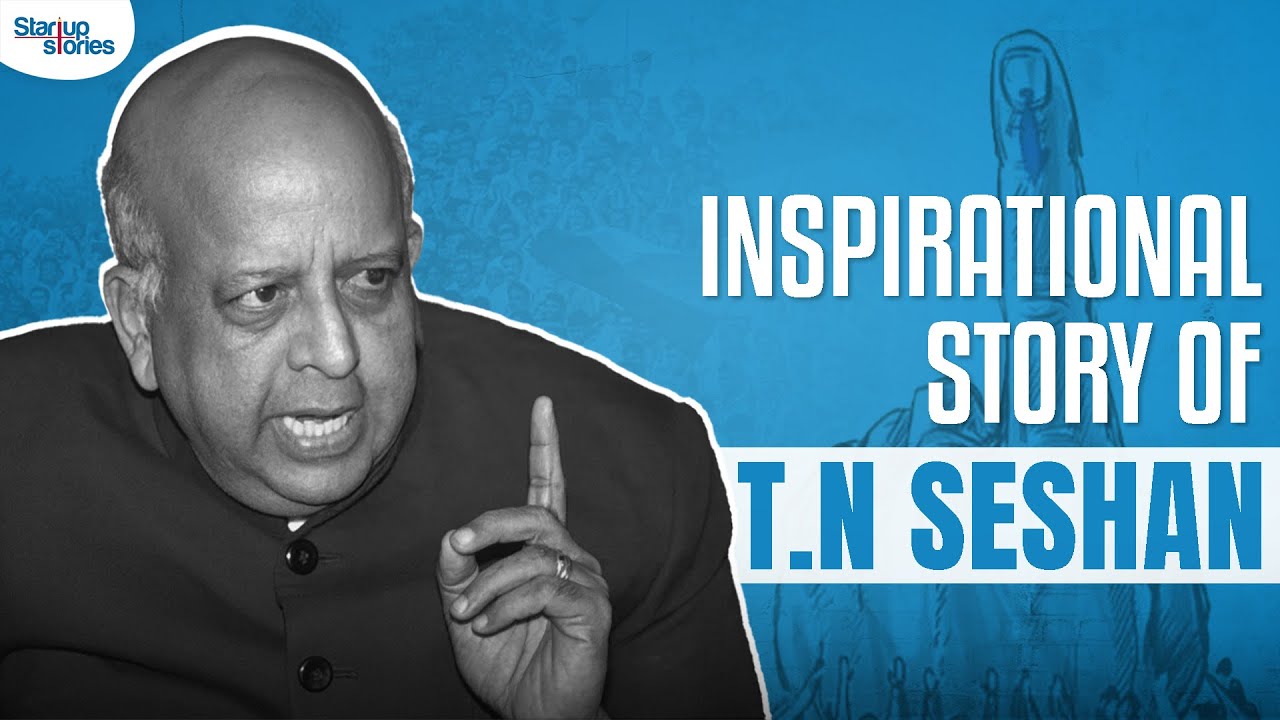
T.N. Seshan’s name stands tall in India’s history as the man who transformed the nation’s electoral system with extraordinary courage and integrity. Born in 1932 in Kerala, Seshan grew up with values of discipline, education, and service to the nation — virtues that shaped his illustrious journey. From his early brilliance at Madras Christian College to his advanced studies in public administration at Harvard University, Seshan’s path reflected rare determination and intellect. Joining the Indian Administrative Service in 1955, he built a reputation as a no‑nonsense officer committed to efficiency and honesty, serving in key roles such as Secretary of Defense and overseeing vital national programs.
As the Chief Election Commissioner of India in 1990, T.N. Seshan sparked a new era of electoral integrity. In a system once marred by corruption, violence, and malpractice, Seshan brought order, fear, and respect through his groundbreaking reforms. He introduced voter ID cards, imposed strict spending limits on campaigns, and insisted on transparency at every level of the election process. Despite criticism from political circles that labeled him dictatorial, his relentless pursuit of fairness empowered every citizen to vote fearlessly. Under his leadership, the Election Commission became a symbol of strength and integrity in Indian democracy.
Seshan’s passing in November 2019 marked the end of an era, but his message continues to resonate across generations. Leaders from every corner of the country mourned the loss of the man who restored faith in free and fair elections. His enduring legacy reminds us that true leadership lies not in wielding power, but in serving people with honesty, courage, and conviction. T.N. Seshan’s life remains a timeless inspiration a reminder that democracy thrives only when its citizens are vigilant, responsible, and fearless.
Entrepreneur Stories
Indian Man Quits JPMorgan, Takes 70% Pay Cut to Launch $6 Million Startup

Leaving behind a high-paying job at JPMorgan, an Indian entrepreneur embraced a 70% salary cut to pursue true purpose and passion in the startup world. Disenchanted with what he described as a “robotic” corporate routine, he sought meaningful work that made a real impact. This pivotal decision marked the beginning of his new journey, one focused on value creation rather than titles and corporate perks.
Powered by resilience and fresh perspective, the entrepreneur launched his own startup, prioritizing innovation and hands-on solutions. The road was challenging, but his vision resonated with the market: the startup quickly gained traction and raised $6 million—an impressive acknowledgement of its potential in a competitive landscape. Every hard lesson from early setbacks and bootstrapping paid off in real customer growth and investor confidence.
Today, his journey stands as an inspiring example for professionals seeking authentic success outside the corporate grind. By trading comfort for creative freedom, he grew a venture that solves important problems, generates jobs, and builds wealth beyond just salary. For ambitious founders, his story highlights the power of risk-taking, adaptability, and relentless focus on impact in India’s thriving startup ecosystem.
Videos
Larry Page: The Visionary Co-Founder Behind Google’s Global Success
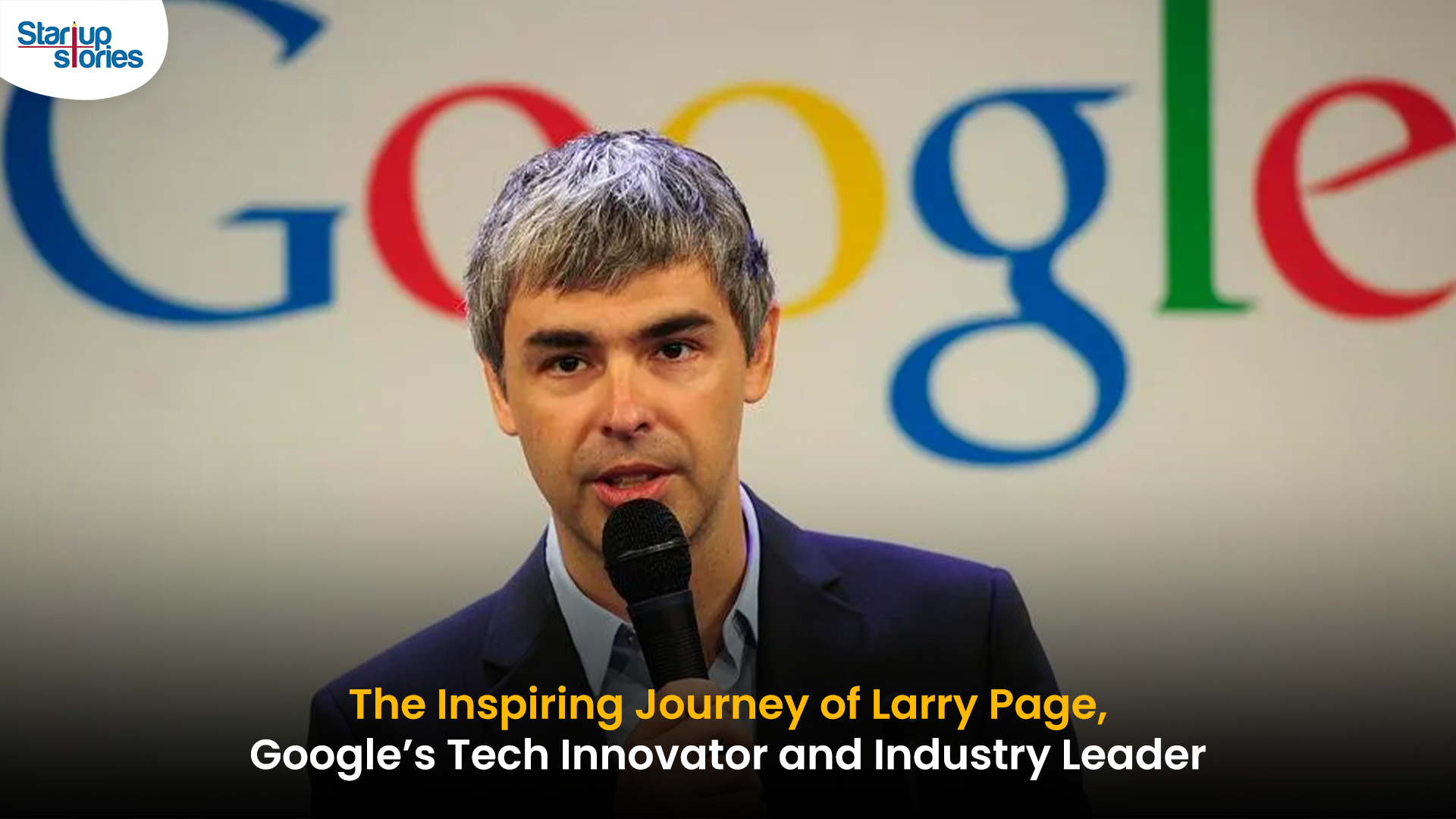
Larry Page is a visionary technology entrepreneur and co-founder of Google, one of the world’s most influential companies. Born in 1973 in Michigan, Page grew up surrounded by computer technology, which inspired his passion for innovation from an early age. He studied computer engineering at the University of Michigan and later pursued his PhD at Stanford University, where he developed the revolutionary PageRank algorithm with Sergey Brin. This technology fundamentally changed the way search engines rank websites, making Google the most accurate and popular search engine globally.
The journey of Larry Page and Google began in 1998 when they officially launched the search engine from a small garage. Leveraging their unique algorithm, Google quickly surpassed competitors due to its ability to deliver highly relevant search results, transforming internet search forever. Under Larry Page’s leadership as CEO, Google expanded beyond search to launch groundbreaking products including YouTube, Gmail, and Google Maps, turning it into a global tech powerhouse that shapes how we access and interact with information online.
Larry Page later became the CEO of Google’s parent company, Alphabet Inc., driving innovation and investment in next-generation technologies such as artificial intelligence, autonomous vehicles, and healthcare solutions. His visionary leadership and commitment to technological advancement have cemented his legacy as one of the most influential figures in the tech industry. Today, Larry Page remains a key influencer in shaping the future of technology and digital innovation worldwide.




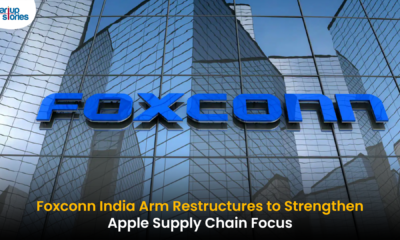










Kuwin
November 5, 2025 at 9:46 am
kuwin sở hữu kho game đa dạng từ slot đến trò chơi bài đổi thưởng, mang đến cho bạn những giây phút giải trí tuyệt vời.
MM88
November 5, 2025 at 1:01 pm
Với giao diện mượt mà và ưu đãi hấp dẫn, MM88 là lựa chọn lý tưởng cho các tín đồ giải trí trực tuyến.
iwin
November 8, 2025 at 1:36 pm
iwin – nền tảng game bài đổi thưởng uy tín, nơi bạn có thể thử vận may và tận hưởng nhiều tựa game hấp
谷歌站群
November 10, 2025 at 2:15 pm
专业构建与管理谷歌站群网络,助力品牌实现全域流量的强势增长。谷歌站群
J88
November 11, 2025 at 12:34 pm
Đến với J88, bạn sẽ được trải nghiệm dịch vụ cá cược chuyên nghiệp cùng hàng ngàn sự kiện khuyến mãi độc quyền.
站群程序
November 13, 2025 at 1:00 am
采用高效谷歌站群策略,快速提升网站在搜索引擎中的可见性与权重。谷歌站群
MM88
November 15, 2025 at 5:12 pm
Khám phá thế giới giải trí trực tuyến đỉnh cao tại MM88, nơi mang đến những trải nghiệm cá cược thể thao và casino sống động.
online Gambling
December 18, 2025 at 1:56 pm
online Gambling online Gambling
Playfina Casino Freispiele Bedingungen
December 20, 2025 at 5:48 am
Entdecken Sie die Vielfalt und den Nervenkitzel, den diese
Online-Casinos zu bieten haben! Diese Marken bieten eine breite Palette an Spielen und
spannenden Bonusangeboten, die speziell auf den deutschen Markt zugeschnitten sind.
Für den deutschen Markt bietet Go Fish Casino und seine Schwesterseiten eine aufregende und
vielfältige Auswahl an Spielen, die sowohl für Anfänger als auch für erfahrene Spieler attraktiv sind.
Go Fish Casino ist Teil eines Netzwerks, zu
dem auch die Schwesterseiten gibsoncasino.com, 21grandcasino.com, tropicacasino.com und traditioncasino.com gehören.
Das Casino bietet auch eine Vielzahl von Zahlungsmethoden, einschließlich Kreditkarten, E-Wallets und Cryptowährungen. Das Casino bietet auch eine umfassende Liste an Zahlungsmethoden, einschließlich Kreditkarten,
E-Wallets und Cryptowährungen. Das Casino bietet eine umfangreiche Auswahl
an Spielen von Rival Gaming, darunter Slots, Tischspiele und interaktive i-Slots.
Wir bieten eine gigantische Auswahl an Spielen von Rival Gaming, darunter interactive i-Slots, die du einfach nicht missen kannst.
Ja, viele Schwestersites von Go Fish Casino bieten spezielle Boni und Aktionen für deutsche Spieler an. Auf den Schwestersites von Go Fish Casino finden Sie
eine Vielzahl von Spielautomaten, Tischspielen und
Live-Casino-Optionen.
Casino Dome wird Ihr neues Lieblings Casino online!
Unsere Bonusbedingungen sind transparent und unsere Kundensupport ist 24/7 verfügbar.
Go Fish Casino bietet eine breite Palette an Zahlungsoptionen, einschließlich Kreditkarten (Visa, MasterCard), E-Wallets (Skrill/Neteller) und
sogar Crypto-Währungen (BTC, ETH, LTC, USDT). Eine der Highlights sind die
interaktiven i-Slots, die eine einzigartige
Spielerfahrung bieten.
References:
https://online-spielhallen.de/bregenz-casino-cashback-ihre-geld-zuruck-aktion-im-detail/
online casinos mit deutscher glücksspielbehörde lizenz 2026
December 21, 2025 at 2:36 am
Teilen Sie Ihre Meinung mit oder erhalten Sie Antworten auf Ihre Fragen. Folglich wurde die Beschwerde aufgrund mangelnder Kommunikation abgelehnt, sodass die Spielerin die Möglichkeit
hatte, den Fall bei Bedarf in Zukunft erneut zu eröffnen. Infolgedessen wurde die Beschwerde aufgrund fehlender weiterer Informationen für die
Untersuchung abgelehnt. Das Beschwerdeteam konnte ihm aufgrund der fehlenden Reaktion des Spielers auf Anfragen nicht weiterhelfen, was zur Ablehnung
der Beschwerde führte. Der Fall wurde als gelöst markiert und der Spieler dankte sowohl dem
Casino als auch dem Beschwerdeteam für ihre Bemühungen.
Nachdem er einen Jackpot von 6.900 $ gewonnen hatte, wurde
sein Auszahlungsantrag aufgrund eines Missverständnisses bezüglich der Kauffunktion eines
Spiels abgelehnt, obwohl er die angegebenen Regeln befolgt hatte.
Der Spieler aus Nevada hatte ein ernstes Problem mit MrO Casino, wo
Gewinne in Höhe von fast 7.000 $ aufgrund eines Missverständnisses über die geänderten Bedingungen des Bonuscodes für ungültig
erklärt wurden. Der Spieler aus den USA zog 854 $ mit einem „No Rules“-Bonus
ab, wurde jedoch aufgrund angeblicher Überwetten abgelehnt, obwohl es keine Obergrenze für den Bonus
gab. Eine Spielerin aus Indiana hatte Probleme mit ihrer Auszahlung bei Mr.O Casino, da diese aufgrund eines
angeblich von derselben IP-Adresse verwendeten Bonuscoupons abgelehnt wurde.
References:
https://online-spielhallen.de/umfassende-dolly-casino-bewertung-deine-entscheidungshilfe/